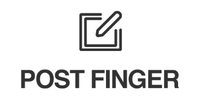What is Data Encryption Standard?

In today’s world, data security is a top priority. Anytime we use the internet, make payments online, or store data in the cloud, it is important to protect our information from potential malicious actors. This is where data encryption comes in. Data encryption is the process of transforming readable data into an unreadable form so that only authorized users can access it. One of the most popular methods for encrypting digital information is the Data Encryption Standard (DES). In this article, we will discuss what DES is and why it has become such an essential tool for businesses and individuals alike.
What is Data Encryption Standard?
The Data Encryption Standard (DES) is a symmetric-key block cipher published by the National Institute of Standards and Technology (NIST). DES is an implementation of a Feistel Cipher, consisting of 16 rounds. A key length of 56 bits was used in early implementations, with the key now being 64 bits long.
DES is a block cipher that takes a fixed-length string of plaintext bits and encrypts it with a secret key to produce a ciphertext bitstring of the same length. In order for this to work, the size of the input plaintext must be an exact multiple of the block size. DES uses a 64-bit block size, meaning that the plaintext must be 64 bits long.
If you have more than64 bits of data that you want to encrypt, you can run DES in what is known as Cipher Block Chaining mode. In this mode, DES encrypts each successive block of data with the previous block of ciphertext. This way, even if two blocks of plaintext are identical, they will each produce a unique ciphertext block.
How Data Encryption Standard Works
The Data Encryption Standard (DES) is a symmetric key algorithm that was developed in the early 1970s at IBM. DES is a block cipher that uses a 56-bit key to encrypt and decrypt data in 64-bit blocks.
DES was initially designed for use in commercial applications, but it has since been adopted by the U.S. government for classified communications. DES is no longer considered secure, however, and has been replaced by the Advanced Encryption Standard (AES).
To understand how DES works, we first need to understand what a block cipher is. A block cipher is a type of encryption algorithm that encrypts data one block at a time. Block ciphers can operate in two modes: electronic codebook (ECB) mode and cipher-block chaining (CBC) mode.
In ECB mode, each block of plaintext is encrypted independently of the other blocks. This means that identical blocks of plaintext will beencrypted to identical blocks of ciphertext. ECB mode is not very secure, however, because it does not provide any diffusion or confusion properties.
In CBC mode, each block of plaintext is XORed with the previous ciphertext block before it is encrypted. This chained structure ensures that identical blocks of plaintext will not produce identical blocks of ciphertext. CBC mode also provides diffusion and confusion properties, which makes it much more secure than ECB mode.
DES uses a 16-round Feistel
Data Encryption Standard Algorithm
The Data Encryption Standard (DES) is a symmetric-key block cipher published by the National Institute of Standards and Technology (NIST). DES is an implementation of a Feistel Cipher. It uses 16 rounds.
DES has been superseded by the Advanced Encryption Standard (AES). AES is also a symmetric-key algorithm, which means that the same key is used for both encryption and decryption. However, AES uses a different block cipher algorithm than DES.
Pros and Cons of Data Encryption Standard
There are a few different methods of encryption, but Data Encryption Standard (DES) is one of the most popular. DES is a symmetric-key algorithm, meaning that the same key is used for both encrypting and decrypting data. DES has been around for a long time and is therefore well-vetted and trusted. However, there are also a few drawbacks to using DES.
One downside to DES is that it uses a 56-bit key, which can eventually be cracked by brute force methods. There have also been instances of vulnerabilities being found in DES (such as the “sweet32” attack). However, these issues can be mitigated by using stronger keys and proper implementations.
Overall, DES is a strong encryption method that is still widely used today. While there are some potential cons to using DES, these can be mitigated with proper security measures.
Conclusion
The Data Encryption Standard (DES) is a symmetric-key algorithm used to encrypt and decrypt data. It was the first officially adopted encryption standard by the US Government, and soon became one of the most widely used encryption algorithms worldwide. DES provides a strong level of security when it comes to protecting sensitive information, making it an ideal choice for organizations that need to ensure their data is kept secure. For many years now, DES has been a major cornerstone in internet security protocols and continues to be trusted as a reliable means of keeping data safe from malicious actors.









